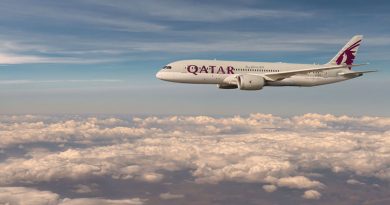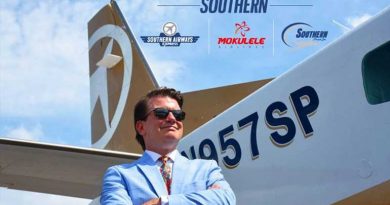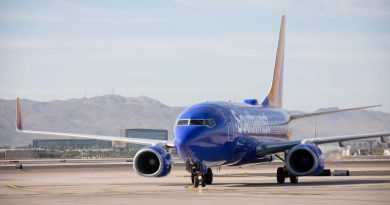CEO confident that United Airlines will have resistance to pilot shortage: Travel Weekly
United Airlines foresees the U.S. pilot shortage slowing industry growth for next five to 10 years. But United executives also said Thursday that the impact will primarily be felt by smaller carriers, creating a tailwind for United relative to its peers.
“I think it’s a strategic advantage because there will be a shortage,” CEO Scott Kirby said during a company earnings call.
He explained that United has recently completed a detailed analysis of the pilot situation in the U.S. Typically, said Kirby, the U.S. produces to 5,000 to 7,000 new airline pilots per year. This year, however, the industry wants to hire 13,000 pilots, and he expects that goal to be even higher next year with aggressive growth plans in place by several airlines. However, it takes years to train aspiring pilots, along with the challenges of ramping up recruitment and training capacity.
Kirby said he doesn’t believe the industry will reach a point where it can bring on 13,000 pilots annually any time in the next five or six years.
With aspiring pilots getting to choose their airlines, Kirby said he expects United, Delta and American to win out.
Kirby predicted that United will benefit from offering high pilot pay. But the carrier is even better positioned than its network rivals because it is flying a substantially larger widebody fleet than Delta and American, which means more opportunities for pilots to get into the most lucrative captain’s seats.
United’s CEO also touted a corporate culture that he believes attracts employees, including United’s strong commitment to decarbonization and its support of industry innovators, including Boom Supersonic, from which it has committed to purchasing 15 planes once that company’s planned Overture aircraft becomes available.
Nevertheless, United’s network has been far from immune from impacts of the pilot shortage. Kirby said that United has 150 regional aircraft grounded.
“They’re never going to come back, I assume,” he said.
And while the carrier had already planned to reduce its fleet of 50-seat aircraft from approximately 300 last year to around 100 by 2026 under its United Next fleet renewal, the pilot shortage has forced United to pull back from small regional markets faster than it had planned.
For example, last month SkyWest stated its intent to pull out of 29 small cities to which it operates federal subsidized Essential Air Service routes under the United Express brand.
Andrew Nocella, United’s chief commercial officer, said that the quick cutback in regional service is frustrating for United as well as the communities it has impacted.
“We don’t expect that to improve at all in the next few years,” he acknowledged.
Still, Kirby said that he’s confident United would achieve its goal this year of hiring approximately 5,000 pilots.
In January, United became the first mainline U.S. carrier to operate its own pilot training school. The carrier expects the Phoenix-based Aviate Academy to graduate 5,000 pilots by 2030.
A silver lining in a losing quarter
During Thursday’s call, United reported a first-quarter net loss of $1.38 billion. Revenue of $6.35 billion were off 27% from the March quarter of 2019 on 19% less capacity and fell short of analyst expectations by $110 million, according to the investment website Seeking Alpha.
However, buoyed by a demand environment the Kirby says is the strongest he’s seen in his entire career, the carrier presented a strongly bullish outlook for the current quarter. United expects its total revenue per available seat mile (TRASM) to be up 17% from 2019. In addition, the carrier expects a Q2 operating margin of 10%.
Kirby said that because United is more reliant on business and international traffic than any other U.S. airlines, it can now expect to see increased improvements in its results compared to carriers that rely more on domestic leisure flying, which has already recovered.
United also hopes to soon be authorized to bring back the 52 Boeing 777-200s that have been grounded since last February, when metal fatigue resulted in engine fan blade cracks that sent debris flying over a Denver suburb.
Those 777s represent 10% of United’s capacity.
Wall Street has responded to United’s positive outlook. Shares were up more than 11% in mid-afternoon trading.
Source: Read Full Article


